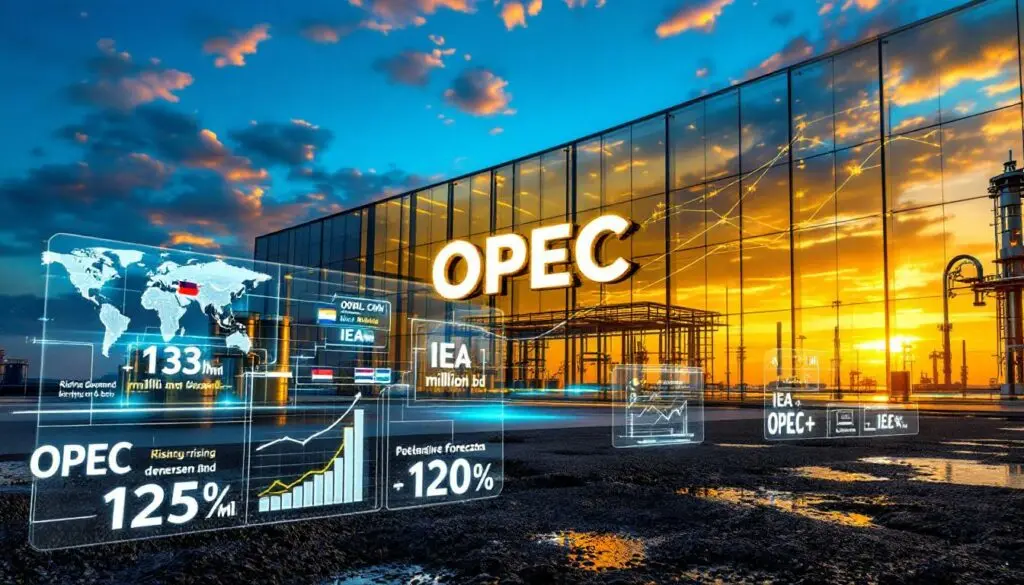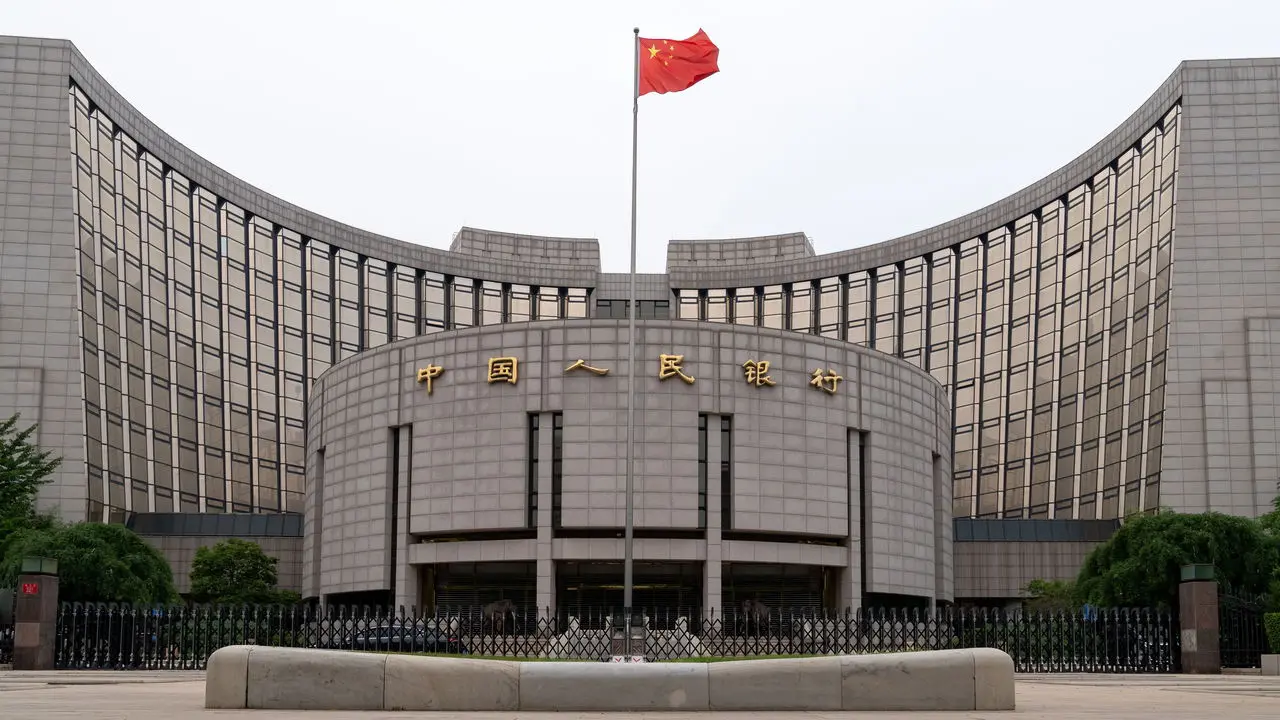In a significant declaration that underscores the complex realities of the global energy transition, the Organization of the Petroleum Exporting Countries (OPEC) has projected a staggering $18.2 trillion in oil sector investment will be required by 2050. This monumental figure, detailed in the latest World Oil Outlook (WOO), serves as a stark reminder that despite the accelerating push for renewable energy, oil remains an indispensable cornerstone of the world’s energy mix for decades to come.
The announcement, delivered by OPEC Secretary General Haitham Al Ghais, challenges prevailing narratives of an imminent fossil fuel phase-out, advocating instead for a pragmatic approach that acknowledges the foundational role of all energy sources in meeting burgeoning global demand.
The Unyielding March of Global Energy Demand
The core premise of OPEC’s outlook is the relentless rise in global energy demand. According to the WOO, worldwide energy consumption is set to surge by a substantial 23% by 2050. This growth isn’t a mere statistical blip; it’s a deeply rooted trend driven by powerful demographic and economic forces shaping the 21st century.
Economic Engines and Population Boom
At the heart of this escalating demand are two primary catalysts: robust economic growth, particularly in developing nations, and an expanding global population. Countries across Asia, Africa, and Latin America are undergoing rapid industrialization and urbanization. As their economies mature, living standards improve, and access to modern energy services becomes more widespread, the per capita energy consumption inevitably rises. Factories need power, transportation networks expand, and millions of new homes require electricity for lighting, heating, and cooling.
For instance, nations like India, Indonesia, and various African economies are experiencing demographic dividends and striving to lift vast populations out of energy poverty. Providing reliable and affordable energy to these regions is not just an economic imperative but a humanitarian one. While developed nations might see slower growth in energy demand due to efficiency gains and saturation, the sheer scale of development in emerging markets ensures a net increase in global consumption. The International Energy Agency (IEA) in its various reports IEA World Energy Outlook 2024 has consistently highlighted this divergence, emphasizing that while OECD countries might stabilize or even slightly reduce their fossil fuel consumption, non-OECD countries will drive the bulk of new demand.
Technology’s Dual Role
New technologies also play a dual role in this demand surge. On one hand, advancements in energy efficiency, smart grids, and electric vehicles aim to reduce overall energy intensity. On the other hand, the proliferation of digital technologies, artificial intelligence, and data centers consumes vast amounts of electricity. The metaverse, advanced computing, and the increasing digitalization of industries all contribute to a growing appetite for power, much of which is still generated by conventional means or requires the foundational infrastructure that oil and gas enable. The manufacturing of renewable energy components themselves – from solar panels to wind turbines – is also energy-intensive, often relying on fossil fuels in their production processes.
“Additions, Not Substitutions”: A Historical Perspective
Secretary General Al Ghais emphasized a crucial historical lesson: “energy history is based on additions, not substitutions.” This statement challenges the popular notion that new energy sources completely displace older ones. Historically, humanity has rarely abandoned an energy source entirely; rather, new sources have been added to the existing mix, expanding the overall energy pie.
Consider the transition from wood to coal during the Industrial Revolution, or from coal to oil in the 20th century. While coal’s dominance waned with the rise of oil, it never disappeared and remains a significant energy source today, particularly in power generation in many parts of the world. Similarly, natural gas emerged as a cleaner alternative to coal and oil in many applications but did not fully replace them.
OPEC’s argument is that the current energy transition will follow a similar pattern. While renewables like solar and wind are growing at an unprecedented pace, their intermittency and the massive scale of infrastructure required for a full transition mean that oil, gas, and even coal will continue to play vital roles. These traditional sources provide the baseload power, the high-density energy for heavy transport, and the raw materials for countless products that renewables currently cannot. This perspective suggests a multi-energy future, where diverse sources complement each other to ensure energy security and meet diverse needs.
The Reality Check: Why Swift Oil Phase-Outs Were a “Fantasy”
One of the most striking aspects of Al Ghais’s message is the assertion that the “narrative of swiftly phasing out oil and gas has been seen for what it is: unworkable and a fantasy.” This reflects a growing sentiment among policymakers and industry leaders who have grappled with the practical implications of aggressive net-zero targets. Many initial policies, driven by urgent climate concerns, often overlooked critical factors like energy security, affordability, and technological feasibility.
Energy Security at the Forefront
The past few years have vividly demonstrated the paramount importance of energy security. Geopolitical events, such as the conflict in Ukraine and its subsequent impact on global energy markets, highlighted the fragility of energy supply chains and the dangers of over-reliance on a single source or region. Europe, heavily dependent on Russian natural gas, faced an unprecedented energy crisis, leading to soaring prices, industrial slowdowns, and a scramble to secure alternative supplies. This crisis forced many European nations to reactivate coal-fired power plants and re-evaluate their timelines for fossil fuel divestment, prioritizing immediate energy availability over long-term climate goals. European Electricity Review 2023 by Ember provides insights into this period.
Energy security isn’t just about avoiding blackouts; it’s about ensuring stable, reliable, and diverse access to energy resources that can withstand geopolitical shocks, natural disasters, or unexpected demand spikes. For many nations, particularly those without abundant renewable resources or the financial capacity for rapid infrastructure overhauls, maintaining access to conventional fuels is a matter of national stability and economic survival.
The Crucial Test of Affordability
The affordability of energy is another critical dimension that was arguably underestimated in early net-zero strategies. Rapid transitions, if not managed carefully, can lead to significant price increases for consumers and industries. High energy costs disproportionately affect lower-income households and can cripple energy-intensive industries, leading to job losses and reduced economic competitiveness.
The “just transition” concept, which aims to ensure that the shift to a low-carbon economy is equitable and inclusive, explicitly recognizes the need for energy to remain affordable. For developing countries, where a significant portion of the population still lacks access to reliable electricity, affordability is even more crucial. Relying solely on nascent renewable technologies, which often require substantial upfront investment and sophisticated grid management, can be prohibitively expensive for nations with limited financial resources. OPEC’s stance suggests that a balanced energy mix, incorporating conventional fuels, can help keep energy costs manageable during the transition period.
Feasibility and Infrastructure Hurdles
Beyond security and affordability, the sheer feasibility of a rapid, wholesale shift away from fossil fuels presents immense challenges. While renewable energy technologies like solar and wind have seen remarkable cost reductions and deployment rates, they still face inherent limitations:
- Intermittency: Solar and wind power are dependent on weather conditions, meaning they don’t provide constant power. This necessitates massive energy storage solutions (batteries, pumped hydro) or reliable backup power from dispatchable sources, often natural gas or nuclear. The scale of battery storage required to back up entire grids for days or weeks is currently economically and technologically daunting.
- Grid Infrastructure: Modernizing and expanding electricity grids to handle large amounts of intermittent renewable energy and transmit it over long distances is a monumental undertaking. This involves smart grid technologies, high-voltage transmission lines, and significant investment in grid resilience.
- Raw Material Supply Chains: The production of renewable energy technologies, from electric vehicle batteries to wind turbines, relies heavily on critical minerals like lithium, cobalt, nickel, and rare earth elements. The extraction and processing of these materials raise environmental and geopolitical concerns, and securing stable supply chains is a complex challenge. The IEA’s Critical Minerals – Topics page and related reports delve into these issues.
A Shifting Policy Landscape
The “mindset shift” noted by Al Ghais is evident in various policy adjustments globally. While climate action remains a priority, there’s a growing recognition that the path to net-zero must be realistic and account for energy security and economic stability. Some countries have extended deadlines for coal phase-outs, others are investing more in natural gas infrastructure, and there’s a renewed interest in nuclear power as a reliable, low-carbon baseload option. Even staunch proponents of renewables are increasingly acknowledging the need for a diversified energy portfolio during the transition.
Oil’s Indispensable Role in Modern Life
The WOO projects global oil demand to reach 123 million barrels per day by 2050. This figure might surprise those who envision a world entirely free of oil in a few decades. However, Al Ghais correctly underlined that oil remains “essential to the functioning of modern life.” Its utility extends far beyond merely fueling cars and planes.
Beyond the Fuel Tank: Petrochemicals and More
While transportation (gasoline, diesel, jet fuel) accounts for a significant portion of oil demand, its role as a feedstock for the petrochemical industry is equally, if not more, critical for modern society. Petrochemicals derived from oil are the building blocks for:
- Plastics: From packaging and consumer goods to medical devices and automotive parts, plastics are ubiquitous. While efforts are underway to increase recycling and develop bio-based alternatives, the sheer volume and versatility of oil-derived plastics mean they will remain dominant for the foreseeable future.
- Fertilizers and Pesticides: Essential for global food security, ensuring high agricultural yields to feed a growing population.
- Pharmaceuticals: Many life-saving drugs and medical equipment rely on oil-derived components.
- Construction Materials: Asphalt for roads, insulation, roofing materials.
- Textiles: Synthetic fibers like polyester and nylon.
- Lubricants, Waxes, and Solvents: Crucial for industrial machinery, manufacturing processes, and countless everyday products.
Even as electric vehicles gain traction, the demand for oil in these non-combustion applications is projected to remain robust, highlighting the deep integration of hydrocarbons into the fabric of industrial and consumer economies.
The $18 Trillion Imperative: Fueling Future Energy Security
The projected $18.2 trillion investment in the oil sector by 2050 is not merely about maintaining current production levels; it’s about ensuring that supply can meet the anticipated demand while simultaneously supporting efforts to reduce emissions and improve efficiency within the sector itself. This investment encompasses a vast array of activities:
- Exploration and Production: Discovering and developing new oil fields to offset natural decline rates from existing wells.
- Infrastructure Development: Building and maintaining pipelines, refineries, storage terminals, and export facilities to efficiently transport and process crude oil.
- Maintenance and Modernization: Upgrading existing infrastructure to ensure safety, reliability, and environmental compliance.
- Emissions Reduction Technologies: Investing in technologies like carbon capture, utilization, and storage (CCUS) at oil and gas facilities, reducing methane emissions, and improving energy efficiency in operations. These investments are crucial for the oil industry to align with broader climate goals while continuing to supply essential energy.
Consequences of Underinvestment
Failing to make these investments would have severe repercussions. Underinvestment in the oil sector could lead to:
- Supply Shortages: As existing fields naturally deplete, new production is needed just to maintain current levels. Without sufficient investment, supply would fall short of demand, leading to chronic shortages.
- Price Volatility: Scarcity drives up prices. A lack of adequate investment would likely result in sustained periods of high and volatile oil prices, impacting global inflation, consumer purchasing power, and industrial profitability.
- Economic Instability: Energy is the lifeblood of the global economy. Disruptions in oil supply and price spikes can trigger recessions, destabilize financial markets, and exacerbate geopolitical tensions.
Navigating the Investment Landscape
The challenge lies in mobilizing this massive capital in an environment increasingly influenced by ESG (Environmental, Social, and Governance) considerations. Many financial institutions and investors are under pressure to divest from fossil fuels or restrict funding for new oil and gas projects. This creates a dilemma: while the world still needs oil, the capital required to produce it is becoming harder to secure.
OPEC’s message is a direct appeal to policymakers and the financial community to recognize the critical need for continued investment. It suggests that a balanced approach is necessary, where investment flows not only into renewables but also into the responsible and efficient production of conventional fuels, especially those that incorporate emissions reduction technologies.
A Holistic Approach: Embracing All Energy Sources and Technologies
Al Ghais’s concluding remarks underscore the necessity for “all energies to deliver the energy security and energy availability that it desires and all technologies to achieve the emissions reductions it requires.” This vision of a diversified energy future is gaining traction as the complexities of the energy transition become clearer.
The Renewable Revolution’s Place
There is no denying the transformative power of renewable energy. Solar photovoltaic (PV) and wind power have become increasingly cost-competitive, and their deployment continues to accelerate globally. They are crucial for decarbonizing the electricity sector and reducing reliance on fossil fuels for power generation. Investments in these technologies, along with hydropower, geothermal, and other emerging renewables, are absolutely essential for meeting climate targets. The IRENA’s Renewable Power Generation Costs in 2023 report highlights these trends.
However, as discussed, renewables alone cannot yet provide the full spectrum of energy services required by a modern global economy. Their intermittency and the need for significant grid upgrades mean they must be complemented by other sources.
Natural Gas: The Bridge to a Lower-Carbon Future
Natural gas is often seen as a “bridge fuel” in the energy transition. It burns cleaner than coal, producing significantly fewer carbon emissions and virtually no particulate matter. It can provide flexible, on-demand power generation that complements intermittent renewables. Many countries are increasing their reliance on natural gas as they phase out coal, viewing it as a pragmatic step towards a lower-carbon future. The development of liquefied natural gas (LNG) infrastructure has also enabled global trade and increased energy security for many nations.
The Promise of Carbon Capture and Hydrogen
Beyond traditional energy sources, advanced technologies are crucial for achieving ambitious emissions reductions.
- Carbon Capture, Utilization, and Storage (CCUS): This technology captures CO2 emissions from industrial processes or power plants before they enter the atmosphere, then stores them underground or uses them in other applications. While still nascent and costly, CCUS holds significant promise for decarbonizing hard-to-abate sectors like cement, steel, and heavy industry, as well as for enabling continued, lower-emission use of fossil fuels. The Global CCS Institute’s 2024 Global Status of CCS Report provides detailed insights.
- Hydrogen: Often touted as the “fuel of the future,” hydrogen can be produced from various sources. “Green hydrogen” (produced via electrolysis using renewable electricity) is carbon-free, but “blue hydrogen” (produced from natural gas with CCUS) offers a lower-carbon alternative in the interim. Hydrogen has potential applications in heavy transport, industrial processes, and even power generation, offering a versatile energy carrier. The Hydrogen Council’s Intelligence section offers various reports on this topic, including the Hydrogen Insights 2024 report.
These technologies, alongside energy efficiency measures and smart grid solutions, represent the “all technologies” approach that OPEC advocates.
Building a Sustainable Future: Collaboration and Realism
Al Ghais concluded by stressing that building a sustainable energy future requires stable markets, data transparency, and collaboration among all industry players with a realistic understanding of the world’s energy needs.
- Stable Markets: Predictable and stable energy markets are crucial for attracting the necessary long-term investments. Volatility discourages investment and makes energy planning difficult. Organizations like OPEC and OPEC+ play a role in attempting to stabilize oil markets through supply management.
- Data Transparency: Accurate and transparent data on energy supply, demand, and investment trends are essential for informed decision-making by governments, investors, and consumers. This helps avoid speculative bubbles and ensures that policies are based on sound analysis rather than wishful thinking.
- Collaboration: The energy transition is a global challenge that requires unprecedented levels of cooperation between energy producers and consumers, governments and industries, and developed and developing nations. Dialogue, shared understanding, and joint initiatives are vital to navigate the complexities and ensure a just and equitable transition.
Kazakhstan’s Steadfast Role in Global Energy Stability
The news also highlighted Kazakhstan’s commitment to the OPEC+ agreement, reaffirmed by Prime Minister Olzhas Bektenov. Kazakhstan is a significant non-OPEC oil producer and plays a crucial role in the OPEC+ alliance, which includes OPEC members and other major oil-producing nations like Russia and Mexico.
The OPEC+ agreement, formed in 2016, aims to stabilize global oil markets by coordinating production levels among its members. Kazakhstan’s adherence to these agreements demonstrates its commitment to market stability and its recognition of the interconnectedness of global energy supplies. As a key player in Central Asia’s energy landscape, Kazakhstan’s consistent participation contributes to the overall effectiveness of the alliance in managing supply and demand dynamics, thereby supporting the stable markets that OPEC deems essential for future energy security. Recent news, such as Kazakhstan reports 11.6% increase in H1 2025 oil production and Kazakhstan does not plan to withdraw from OPEC+ agreement, further illustrate its ongoing role.
Conclusion: A Pragmatic Path Forward
OPEC’s latest World Oil Outlook presents a compelling, if challenging, vision for the future of global energy. It is a call for realism, urging policymakers and stakeholders to move beyond idealistic narratives and embrace a pragmatic approach that acknowledges the continued necessity of oil and gas alongside rapidly expanding renewables. The projected $18.2 trillion investment in the oil sector is not a retreat from climate action but rather a recognition of the immense scale of global energy demand and the multifaceted challenges of a truly sustainable transition.
By emphasizing energy security, affordability, and feasibility, OPEC is advocating for a balanced, multi-energy future where collaboration and data-driven decisions pave the way for a stable and prosperous world, powered by all available energy sources and technologies. The path to net-zero is not a sudden leap but a complex, gradual evolution that requires sustained investment across the entire energy spectrum.
Ready to take your career to the next level? Join our dynamic courses: ACCA, HESI A2, ATI TEAS 7 , HESI EXIT , NCLEX – RN and NCLEX – PN, Financial Literacy!🌟 Dive into a world of opportunities and empower yourself for success. Explore more at Serrari Ed and start your exciting journey today! ✨
photo source: Google
By: Montel Kamau
Serrari Financial Analyst
21st July, 2025
Article, Financial and News Disclaimer
The Value of a Financial Advisor
While this article offers valuable insights, it is essential to recognize that personal finance can be highly complex and unique to each individual. A financial advisor provides professional expertise and personalized guidance to help you make well-informed decisions tailored to your specific circumstances and goals.
Beyond offering knowledge, a financial advisor serves as a trusted partner to help you stay disciplined, avoid common pitfalls, and remain focused on your long-term objectives. Their perspective and experience can complement your own efforts, enhancing your financial well-being and ensuring a more confident approach to managing your finances.
Disclaimer: This article is for informational purposes only and does not constitute financial advice. Readers are encouraged to consult a licensed financial advisor to obtain guidance specific to their financial situation.
Article and News Disclaimer
The information provided on www.serrarigroup.com is for general informational purposes only. While we strive to keep the information up to date and accurate, we make no representations or warranties of any kind, express or implied, about the completeness, accuracy, reliability, suitability, or availability with respect to the website or the information, products, services, or related graphics contained on the website for any purpose. Any reliance you place on such information is therefore strictly at your own risk.
www.serrarigroup.com is not responsible for any errors or omissions, or for the results obtained from the use of this information. All information on the website is provided on an as-is basis, with no guarantee of completeness, accuracy, timeliness, or of the results obtained from the use of this information, and without warranty of any kind, express or implied, including but not limited to warranties of performance, merchantability, and fitness for a particular purpose.
In no event will www.serrarigroup.com be liable to you or anyone else for any decision made or action taken in reliance on the information provided on the website or for any consequential, special, or similar damages, even if advised of the possibility of such damages.
The articles, news, and information presented on www.serrarigroup.com reflect the opinions of the respective authors and contributors and do not necessarily represent the views of the website or its management. Any views or opinions expressed are solely those of the individual authors and do not represent the website's views or opinions as a whole.
The content on www.serrarigroup.com may include links to external websites, which are provided for convenience and informational purposes only. We have no control over the nature, content, and availability of those sites. The inclusion of any links does not necessarily imply a recommendation or endorsement of the views expressed within them.
Every effort is made to keep the website up and running smoothly. However, www.serrarigroup.com takes no responsibility for, and will not be liable for, the website being temporarily unavailable due to technical issues beyond our control.
Please note that laws, regulations, and information can change rapidly, and we advise you to conduct further research and seek professional advice when necessary.
By using www.serrarigroup.com, you agree to this disclaimer and its terms. If you do not agree with this disclaimer, please do not use the website.
www.serrarigroup.com, reserves the right to update, modify, or remove any part of this disclaimer without prior notice. It is your responsibility to review this disclaimer periodically for changes.
Serrari Group 2025












